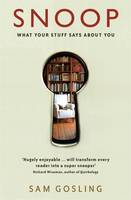Assignment four asked us to use all the skills we have learnt so far to conduct interviews and gather information on a chosen topic. The topic I decided to investigate was ‘what object do people treasure the most and why?’
To help me decide on questions that were most relevant to ask I did a quick brainstorming exercise and a mind map. The brainstorming gave a clearer image of the topic and the issues surrounding it. Before I only had the one question, ‘what object do you treasure and why?’ After brainstorming I came up with a list of related questions that would give me the information I wanted and gain answers with greater depth.
The questions I decided to ask were as follows:
- What object do you treasure the most?
- Can you sketch it for me?
- Who is it from? How did you acquire it?
- When did you acquire it?
- How did you first feel about it? How do you feel about it now?
- How much was it? How much is it worth now to you/ to someone else?
- Would you sell it?
- How would you react if it was lost or stolen?
- How often do you use it?
- Where do you keep it?
- Do you think you will still treasure it in 30 years? Why?
- Why do you think you treasure this object?
- Brainstorming exercise.
The interview style chosen was semi-structured, this meant that my questions were there as a guide but I didn’t have to stick to them. I could follow up any answers I found interesting or create new questions if I felt it was necessary.
I interviewed three people who were friends of friends and flatmates of friends. We arranged to meet in relaxed environments where we could both feel comfortable. I met one person at a pub and the others at their flats. I brought consent forms with me which they signed before I began the interview. The three people I interviewed were; Derek Li, aged 27, civil servant, Lisa Fitzgerald, 24, H.R. advisor and John Hendry, 25, primary teacher.
I wanted to incorporate a Service Design Tool into the interviews which would break the ice and make it a little more interactive so the interviewee didn’t just have to answer questions. I decided to get them to sketch their treasured object at the start of the interview and at the end do a brainstorming exercise about their object. The brainstorming would be a good way of achieving answers and thoughts that may not have been addressed by the questions. I thought it would bring out words that they were subconsciously thinking about the object as that happened when I was brainstorming for question ideas.
I was quite surprised by the answers and they were all very different from each other. Lisa’s most treasured object was her i-Phone because it helped her connect and keep her life organised. John’s was his photos from Camp America
After discussing my findings and doing another brainstorming session I began to interpret what I found.
The objects people treasure the most are not necessarily expensive items as you can see from John’s treasured object, his photos. They are usually items with sentimental value that may appear to be worthless to someone else. This was discussed in a Design Studies lecture before Christmas many people found that their favourite Christmas gift was something that wouldn’t be worth a lot of money now but they still love because of how it made them feel and the memories attached to it.
John and Derek said that their objects were priceless and irreplaceable something that they will treasure forever. However Lisa said that she will get rid of her most treasured object, her i-Phone, as she will up grade it to a newer version in a couple of years. For the time being Lisa’s object is priceless to her as it stores important private information and she feels she needs it to function in her daily routine. This object will be replaceable and she will no doubt treasure its replacement. I don’t think it’s the physical item Lisa treasures but what it holds.
I think that a person’s most treasured object can be affected by their up bringing and their personality. Derek’s jade from his mum that he wears on a necklace shows this. He says he never takes it off even when sleeping and washing. I asked him why he always wears it, he said it’s like a “safety blanket” when he was given it he was told it would keep away evil spirits and bad luck. I asked if any other members of his family wore jade for the same reasons, he said yes and told me that many Chinese people wear it as they believe it protects. People from a different culture would not value a jade necklace in the same way as Derek because they may not know the meaning behind it. Derek was brought up with this necklace and the story behind it so it is very precious to him. Value is “personal opposed to universal: that an object has sentimental value for a particular person does not entail that it ought to have sentimental value for anyone else…” Anthony Hatzimoysis.
My interviewing technique still has to be improved upon. One of the main things I didn’t like about it was that I felt too rehearsed and a bit wooden when I was conducting the interview. I think that if I was more relaxed maybe I would have been able to ask more questions that may have let me dig deeper and achieve a greater variety of answers. I’m sure that this will come with practice, as I don’t interview people often this was probably the reason for feeling awkward. I do however think I’m a good listener and recorded all that was said so no important information was lost.












